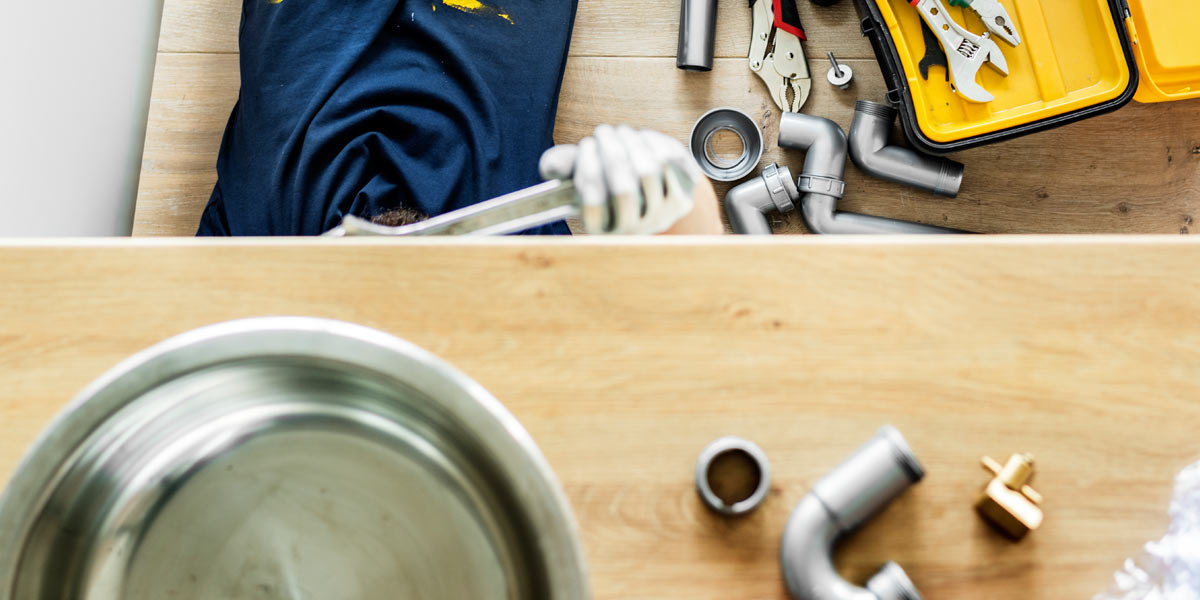- Is vinegar better than Drano for a slow draining sink?
- How to use vinegar to clear kitchen and bathroom drains
- How do you know when it’s time to call a plumber?
- What causes a slow or clogged drain?
- How can I prevent clogs and slow draining sinks?
You finish up the dishes and notice your kitchen sink is draining slowly. Uh oh—a clogged drain!
Should you start googling “plumber near me” or try a do-it-yourself (DIY) fix like Drano?
Our master plumber Patrick recommends a safer, less expensive alternative to Drano that works just as well on a slow draining kitchen sink or bathroom drain. And you may already have it in your kitchen pantry.
Is vinegar better than Drano for a slow draining sink?
If you’ve got a fully clogged drain pipe, there’s nothing you can pour in that will fix it. But if it’s just draining a bit slowly or if you want to prevent clogs, vinegar is your best bet. It helps break down the grease and grime that cause a slow draining sink.
But here’s where it really has Drano beat:

- It’s better for your pipes. Remember, the chemicals in Drano aren’t just eating away at the clog—they’re also eating away at your pipes. Drano includes a special ingredient to make it safer on pipes, but it can still do some damage.
- It’s less expensive. A 2.5 litre jug of cleaning vinegar costs about $4, compared to $8.50 for a 2.3 litre bottle of Drano.
- It’s better for the environment. Caring about the environment is widespread among our East Toronto customers—not just folks in Leslieville, Riverdale or the Beaches. Drano contains bleach, as well as cocktail of lye and aluminium shards that chemically react together to produce a near-boiling temperature.
- It’s safer for you and your family. Not only is Drano harmful if swallowed, it also produces toxic fumes. If you use it, you need to be very careful—DO NOT use a plunger with it! If you accidentally plunge up any Drano and get it on your skin, you’re looking at a nasty chemical burn!
How to use vinegar to clear kitchen and bathroom drains
For a slow draining bathroom sink, kitchen sink or bathtub drain simply pour two litres of vinegar down the drain and let it sit. I recommend using cleaning vinegar over plain white vinegar, because it has higher acidity (10% compared to 5%).
For a very slow draining sink, you can also try shaking half a cup of dry baking soda down the drain, then pouring in a mixture of one cup of vinegar and one cup of water. Plug the drain with the stopper and let it work its magic.
After either method, rinse the drain with hot water after 15 minutes and see if you notice any difference.
How do you know when it’s time to call a plumber?
Both vinegar and Drano are intended more to prevent plumbing problems than to solve them. Sometimes by the time you notice a clogged drain, it’s already too late to DIY.
You need to call a plumber when:
- You have a very slow draining sink or bathtub drain and nothing is helping.
- The drain is completely clogged (no water will go down it).
- More than one drain is clogged—this indicates a problem deeper down the pipe.
A master plumber, like Neighbourhood Plumbing, has special machinery to break up or pull out whatever’s causing the problem.
What causes a slow or clogged drain?
Many factors can lead to build-up, slow drains and eventually clogged pipes.
For kitchen sinks, food residue is the most likely culprit. Grease, oil or fat can harden as it makes it way down your drain pipe. Combine this with any food scraps that get rinsed down and you’re on your way to a blockage.
For bathroom sinks and bathtub drains, the problem is most likely caused by soap scum and hair. We also often see blockages from things that should have been thrown in the garbage can instead, like dental floss.
How can I prevent a slow or clogged drain pipe?
Here are three tips to prevent future clogs:
- Don’t pour leftover cooking oil or grease down the drain. For Toronto residents, small amounts can be wiped up with a paper towel and put in the Green Bin. Larger quantities are considered Household Hazardous Waste and must be taken to your local drop-off depot.
- Use drain catchers to prevent hair and food particles from going down your drains.
- Once a month, pour two litres of cleaning vinegar down your drain.
Are you an East Toronto resident with a clogged pipe? Contact Patrick from Neighbourhood Plumbing and he’ll get you unstuck!
